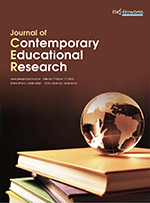Abstract
In response to the national strategy of “vigorously cultivating interdisciplinary talents and actively promoting interdisciplinary integration,” this article focuses on the nationally recognized Environmental Design program at Hezhou University’s College of Design, leveraging local industry advantages to engage in interdisciplinary integration through educational practices. Using the “Construction of the Panoramic Virtual Nature Museum of the Guizhou Crocodile Lizard at Mount Dagui” as a case study, we aim to establish a professional and interdisciplinary learning community, incorporate student-centered interactive teaching methods, boost student motivation, enhance teaching quality, nurture forwardthinking versatile innovative talents, and provide a guideline for interdisciplinary educational reform.
References
Wenger E, McDermott R, Snyder W, 2002, A Guide to Managing Knowledge: Cultivating Communities of Practice, Harvard Business School Press, Boston, Massachusetts, 4.
Habermas J, 2004, Habermas Theory of Communicative Behavior (Volume 1): Behavioral Reasonableness and Social Reasonableness [Cao W, Trans.], Shanghai People’s Publishing House, Shanghai.
Merrill MD, Li Z, Jones MK, 1990, The Second Generation Instructional Design Research Program. Educational Technology, 30(3): 26–31.
Muirhead B, Juwah C, 2004, Interactivity in Computer-Mediated College and University Education: A Recent Review of the Literature. Journal of Educational Technology & Society, 7(1): 12–20.
Li Y, 2009, Introduction to Art and Design, Hubei Fine Arts Publishing House, 4.
